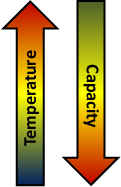Hawker Headlines
Summer 2019 Edition

Quick Tips!
What are the benefits of AGM batteries (like Hawker®) over flooded/wet-cell or gel-cell batteries? Find out…Watch the training video at www.hawkerbattery.com in the Video Vault.
Answer to question from last issue:

Does hot weather affect my battery when I’m not using it?
Yes, due to increased self-discharge. You see, the typical flooded/wet-cell SLI (starting, lighting, ignition/instrumentation) battery loses about 3% of its capacity per month when sitting unused at 77°F (25°C), whereas the Hawker® ARMASAFE™ Plus 6TAGM (deep cycle/SLI) battery loses much less at about 1 to 1 1/2% per month.
However, for every 15°F (8.3°C) increase in temperature, the battery’s self-discharge rate doubles from its previous rate. For example:
- at 92°F (33.3°C), the self-discharge rate for a flooded-cell is 6%, and for a Hawker® AGM it’s 2-3%
- at 107°F (41.6°C), the self-discharge rate for a flooded-cell is 12%, and for a Hawker® AGM it’s 4-6%
- at 122°F (50.0°C), the self-discharge rate for a flooded-cell is 24%, and for a Hawker® AGM it’s 8-12%
So, if you have batteries that aren’t being used, be sure to test and recharge them often (at least every 3 months)…and more frequently as temperatures go up. Better yet, place them on a trickle-or float-charger!

Did you know?
That Voltage (V) is a unit of measurement for electromotive force. The electromotive force is caused by a difference in charge between two points (e.g., between the battery’s positive (+) and negative (-) battery terminals). Colloquially, voltage is known as electrical pressure; it’s the force that moves electrons through circuitry to provide power!
Training:

One, two, three, four… Contact Hawker® for free training on batteries and more!   Set down that multimeter and call your Hawker® FSR today. And, together we’ll schedule your unit for free Battery Maintenance and Recovery Training (BMRT).

